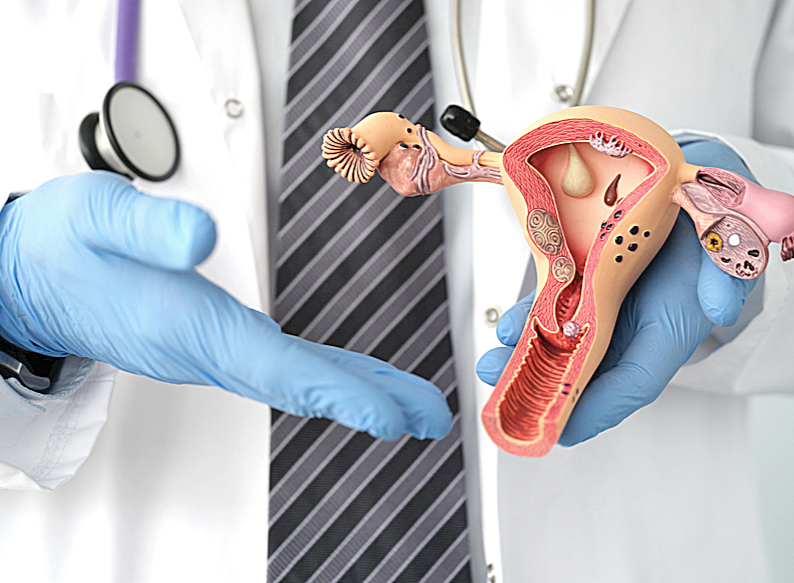Okay sis, you have a uterine fibroid, what’s next?
Cry? Call ya moms? Grab a seat on the what if train? It is perfectly fine (and normal) if you do one, or all, of these things. It can be shocking news, especially if you already have insight on what this news can mean. However, if you are like I was (I had no idea what having a fibroid meant), you may do what I did…consult Dr. Google. So, first things first, uterine fibroids are extremely common so know that you are not alone. You are in pretty good company; I mean I’m here (see my story), so ya know the party lit (at least until about 10 pm cause that’s when I’m ready to go home). Anyway, let’s work through this thing together.
What is a uterine fibroid?
A uterine fibroid is a growth (usually non-cancerous) inside or outside of the uterus. For a more detailed definition, the Mayo Clinic got you.
What are the symptoms of a uterine fibroid?
Not everyone will develop symptoms due to fibroids (lucky bast…I mean, such a blessed bunch). The rest of us may have to endure heavy and/or prolonged menstrual bleeding, severe pelvic pain, pressure on the bladder and/or bowel and a decrease of energy levels. Honey I was Big Tired.

Are there different types of uterine fibroids?
Yes. It would be too simple to just be one. There are four types of fibroids (that I know of). If you know of another, drop it in the comments. Teach me something sis.
- Intramural fibroids grow within the muscular uterine wall.
- Submucosal fibroids bulge into the uterine cavity.
- Subserosal fibroids project to the outer wall of the uterus.
- Pedunculated fibroids are attached to the uterine wall by a stalk-like growth called a peduncle. They can grow inside or outside of the uterus.
What are your options?
Do Nothing
In some cases, fibroids do not cause any symptoms and do not require treatment. If you are asymptomatic and your fibroids are “small,” your doctor may recommend watchful waiting. If this is the case, here is my fifteen (IYKYK) cents. BE CAREFUL! This what my initial doctor told me to do in 2019. Yall, at that time, my fibroid was already 11 cm. I did not realize that was considered large. I figured sis knew what she was talking about, I mean she was my OB, right?!
Well, just over a year later, mine had more than doubled in size. So, if you decide this is the best option for you, I’d recommend you do quarterly (at least) check-ins to monitor the growth of your fibroids and to ensure that they are not causing any complications, cause baybee, you don’t want to deal with what I dealt with, mmmmmk! You’ve been warned now, do you boo boo.
Get you some meds
Although, there are several medications that can be used to treat fibroids, here are a few I often hear about.
- Nonsteroidal anti-inflammatory drugs (NSAIDs) can help to relieve pain and reduce heavy bleeding.
- Hormonal medications that contain hormones (i.e. birth control pills, progestin, or gonadotropin-releasing hormone (GnRH) agonists) can be used to shrink fibroids or reduce symptoms. Now, I don’t personally know anyone that’s been successful with this, but that doesn’t mean it won’t work.
- Ulipristal acetate is a medication can help to reduce the size of fibroids and relieve symptoms. Again, many people have told me this did not work for them, but it has to work for someone, no?
Minimally invasive procedure
If your fibroids are causing symptoms and other treatments have not been effective, your doctor may recommend a minimally invasive procedure to remove or shrink the fibroids. Some of the options include:
Uterine artery embolization (UAE): This procedure involves injecting tiny particles into the blood vessels that supply the fibroids, cutting off their blood supply and causing them to shrink.
MRI-guided focused ultrasound surgery (MRgFUS): This procedure uses high-intensity ultrasound waves to destroy the fibroids.
Myomectomy
This surgery involves removing the fibroids while leaving the uterus intact, which can be a good option for women who want to have children in the future. This was where I ultimately landed and lissen real good, the recovery process was painful!
Hysterectomy
In some cases, a hysterectomy (removal of the uterus) may be recommended as a treatment for fibroids. This is usually only recommended for women who have completed their families/do not wish to have children in the future or for those with severe circumstances.

Despite what anyone tells you, the takeaway here is to do your research. Ask questions. This is your body. Make the right decision for your circumstances. It is important to discuss your options with your doctor to determine the best course of treatment for you. If you are not sure about your doctor’s recommendation, get second, third and fourth opinions, if necessary.
Do what feels right, your gut is rarely wrong, ya heard! While fibroids can be a nuisance, they are rarely life-threatening, and with the right treatment plan, you can manage your symptoms and maintain your quality of life. A fibroid diagnosis is not the end, so keep living, keep surviving and keep thriving.
Disclaimer: I am not a medical professional. If you need medical advice, please consult your doctor, you know the person with a degree (or 3) that you are paying. I am just here to share my knowledge and my personal experience with mybroids. See what I did there (I know you liked that)?
That’s it. That’s All Yall.
J. Bai
Leave a Reply